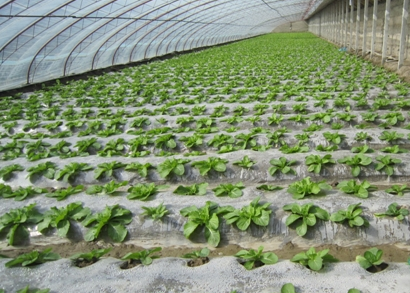Technical points for planting Chinese cabbage in the solar greenhouse in summer
The solar greenhouse can only be used as an open field in the summer, and its facilities can't function. If you plant Chinese cabbage from June to September and go public from late July to early September , you can not only enrich the market vegetables, but also play the daylight. The role of the greenhouse has achieved considerable economic benefits. The key points of cultivation are as follows: Â Â

First, select suitable varieties to choose Chinese cabbage varieties suitable for summer cultivation, high temperature and high humidity resistance, strong disease resistance, and relatively early heat resistance.
Second, the solar greenhouse greenhouse solar greenhouse greenhouse film should be complete, no leakage, high terrain. Dig a drain of 30 cm wide and 40 cm deep around it . 90 cm wide opening at the top of the shed roof vent at the interface mold feet apart vents 92 cm wide, from west to east and then tightly covered with gauze. In case of heavy rain, the vents should be closed in time, the vents on the north wall should be fully opened, covered with gauze, so that on the one hand, ventilation can be cooled, on the other hand, the rain can be avoided, and the gauze can also prevent insects.
3. Fertilizing the whole land to make 667 square meters ( 1 mu) of fertilized organic fertilizer 4000 to 5000 kg and compound fertilizer 25 to 30 kg before plowing, then plowing 20 to 35 cm, and flattening to make a 50 cm wide crucible .
Sprinkler irrigation and micro-irrigation automatic control equipment With the development of economy, water resources, energy shortage and labor cost increase, more and more water-saving irrigation systems will adopt automatic control. This article focuses on the advantages and classification of automated irrigation.
The advantages are as follows:
(1) It is possible to truly control the amount of irrigation, irrigation time and irrigation cycle in a timely and appropriate manner, thereby increasing crop yield and significantly improving water utilization.
(2) Saving labor and operating expenses.
(3) The work plan can be arranged conveniently and flexibly, and the management personnel do not have to go to the field at night or other inconvenient time.
(4) Since it can increase the effective working time every day, the initial capital investment in pipelines, pumping stations, etc. can be reduced accordingly.
classification:
First, fully automated irrigation system
The fully automated irrigation system does not require direct human involvement. The pre-programmed control procedures and certain parameters that reflect the water requirements of the crop can automatically open and close the pump for a long time and automatically irrigate in a certain order. The role of the person is simply to adjust the control program and overhaul the control equipment. In this system, in addition to emitters (heads, drip heads, etc.), pipes, fittings, pumps, and motors, it also includes central controllers, automatic valves, sensors (soil moisture sensors, temperature sensors, pressure sensors, water level sensors, and rain sensors). Etc.) and wires.
Second, semi-automatic irrigation system
In the semi-automated irrigation system, no sensors are installed in the field. The irrigation time, irrigation volume and irrigation period are controlled according to pre-programmed procedures, rather than feedback based on crop and soil moisture and meteorological conditions. The degree of automation of such systems is very different. For example, some pump stations implement automatic control, and some pump stations use manual control. Some central controllers are only one timer with simple programming function, and some systems have no central control. The controller, but only some of the sequential switching valves or volume valves are installed on each branch pipe.
Automated irrigation is the trend of the times. In the future water-saving irrigation projects, more and more automated irrigation systems will be applied.
Degree Irrigation Nozzle,Irrigation for Agriculture,Impact Drive Sprinkler,Plastic Drip Irrigation Fittings
JIANGSU SKYPLAN GREENHOUSE TECHNOLOGY CO.,LTD , https://www.skyplantgreenhouse.com